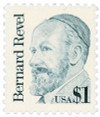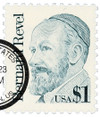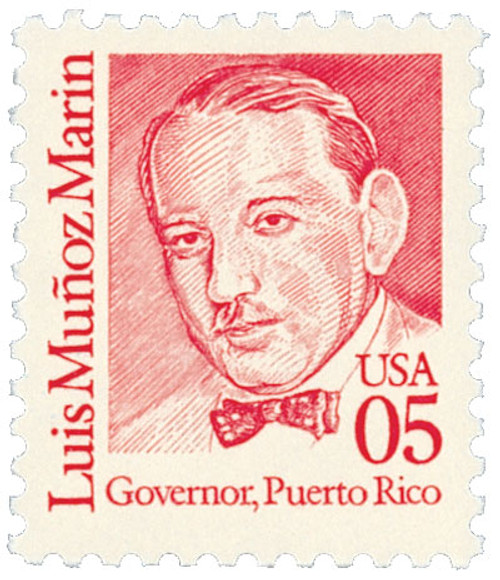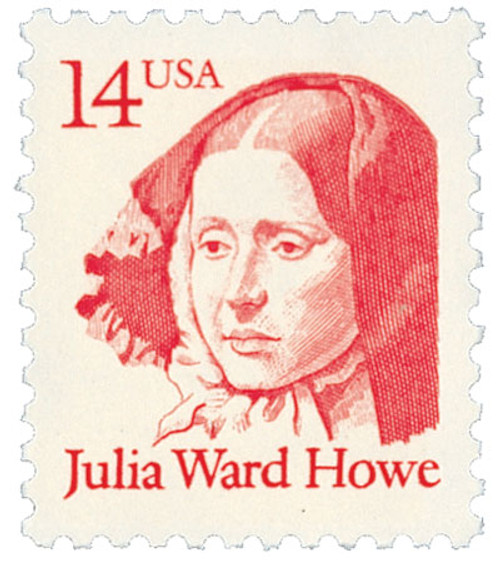
# 2193 - 1986 $1 Great Americans- Bernard Revel
U.S. #2193
1986 $1 Bernard Revel
Great Americans
- 36th stamp in Great Americans Series
- Has a secret mark (a Star of David) added by the engraver, which is against US postal regulations
- Issued for Revel’s 101st birthday and 100th anniversary of the predecessor to Yeshiva University
Stamp Category: Definitive
Series: Great Americans
Value: $1, for use on registered mail and “make up” postage on heavier items
First Day of Issue: September 23, 1986
First Day City: New York, New York
Quantity Issued: 161,080,000
Printed by: Bureau of Engraving and Printing
Printing Method: Engraved
Format: Panes of 100 in sheets of 800
Type: Ex: Type I, II, etc.
Perforations: 11.2
Color: Dark Prussian green
Watermark: Design/description of watermark
Why the stamp was issued: This stamp was issued for use on registered mail and for “make up” postage on heavier items. It replaced the 1979 $1 Rush Candleholder stamp. While this stamp pictures Bernard Revel and was initially scheduled to be issued on his 101st birthday, it also was issued to honor Yeshiva University in New York. The school’s roots stretched back to 1886, when the first school of Talmudic studies in the US was founded. 1986 marked the 100th anniversary of the event. In 1985, the USPS established new guidelines forbidding stamps that honored school anniversaries, and also stated that stamps honoring people should be issued for significant anniversaries. In effect, the USPS was breaking two of their own rules with this stamp.
About the stamp design: Artist Tom Broad created the portrait of Revel used on this stamp from a photo provided by Yeshiva University. This was Broad’s second US stamp design.
Special design details: A Bureau of Engraving and Printing master engraver defied postal regulations covering the creation of US stamps. While engraving the artwork for the 1986 $1 Bernard Revel stamp, he added a secret mark. Although secret marks are permitted by some countries, it’s against US postal regulations to etch signatures or other unauthorized marks into a stamp die. The mark went undetected by BEP officials until an anonymous phone call tipped them off after the stamps were printed and many sold.
The mark added by the engraver was a small Star of David, nearly invisible without a magnifying glass. This secret mark is located, as you look at the stamp, on the right side of Revel’s mouth, near where his beard and moustache meet.
First Day City: The First Day ceremony for this stamp was held at the Stern College of Women at Yeshiva University’s Midtown Center in New York City. In his remarks, the university’s president said “We believed this stamp honors not only Dr. Revel as an innovative educator, but al the university as an innovative institution.”
Unusual fact about this stamp: Uneven ink distribution led to some stamps missing ink in the “R” of Revel and “B” of Bernard. There are also varieties with tagging omitted and all color omitted.
About the Great Americans Series: The Great Americans Series was created to replace the Americana Series. The new series would be characterized by a standard definitive size, simple design, and monochromatic colors.
This simple design included a portrait, “USA,” the denomination, the person’s name, and in some cases, their occupation or reason for recognition. The first stamp in the new series was issued on December 27, 1980. It honored Sequoyah and fulfilled the new international postcard rate that would go into effect in January 1981.
The Great Americans Series would honor a wider range of people than the previous Prominent Americans and Liberty Series. While those series mainly honored presidents and politicians, the Great Americans Series featured people from many fields and ethnicities. They were individuals who were leaders in education, the military, literature, the arts, and human and civil rights. Plus, while the previous series only honored a few women, the Great Americans featured 15 women. This was also the first definitive series to honor Native Americans, with five stamps.
The Bureau of Engraving and Printing (BEP) produced most of the stamps, but private firms printed some. Several stamps saw multiple printings. The result was many different varieties, with tagging being the key to understanding them. Though there were also differences in perforations, gum, paper, and ink color.
The final stamp in the series was issued on July 17, 1999, honoring Justin S. Morrill. Spanning 20 years, the Great Americans was the longest-running US definitive series. It was also the largest series of face-different stamps, with a total of 63.
Click here for all the individual stamps and click here for the complete series.
History the stamp represents: Rabbi and scholar Bernard Revel was born on September 17, 1885, in Prienai, Russia (present-day Lithuania).
Revel first studied under his father, who was also a rabbi. After his father’s death in 1896, Revel studied under other local rabbi’s and graduated from high school through independent study. Revel participated in the Russian revolutionary movement and was arrested and imprisoned following the revolution of 1905.
After he was released in 1906, Revel moved to the United States. He attended Rabbi Isaac Elchanan Theological Seminary (RIETS) and earned a Master of Arts degree from New York University in 1909. Revel then met Rabbi Bernard Levinthal, one of the leading rabbis in America, who invited him to come to Philadelphia to serve as his secretary and assistant.
While in Philadelphia, Revel briefly attended law school but realized that wasn’t what he wanted to do. He went on to earn a doctorate of philosophy from Dropsie College.
Revel got married in 1908 and moved to Tulsa, Oklahoma to join his wife’s family business in the oil industry. He built a sizable fortune there and continued his study of the Torah.
In 1915, Revel was invited to move back East to serve as the first president of Yeshiva College. Under his leadership, the school (which had been created by merging two existing schools) combined a liberal arts program with Jewish studies and established a graduate school to train rabbinical leaders.
Revel was well respected among his students. In addition to his duties, he continued his own studies. He was largely concerned with finding ways to continue traditional observances in the modern world. He also wanted to establish a growing educational system that helped his students feel accepted in the world. To honor Revel’s role in the school’s history, their graduate school was named after him.
Outside of the school, Revel was also a member of the Union Orthodox Rabbis and was appointed its honorary president. He published articles in several Hebrew periodicals and was an associate editor of Otzar Yisrael, ad Hebrew Encyclopedia. He also became the first vice president of the Jewish Academy of Arts and Sciences in 1935. Revel died on December 2, 1940, in New York.
U.S. #2193
1986 $1 Bernard Revel
Great Americans
- 36th stamp in Great Americans Series
- Has a secret mark (a Star of David) added by the engraver, which is against US postal regulations
- Issued for Revel’s 101st birthday and 100th anniversary of the predecessor to Yeshiva University
Stamp Category: Definitive
Series: Great Americans
Value: $1, for use on registered mail and “make up” postage on heavier items
First Day of Issue: September 23, 1986
First Day City: New York, New York
Quantity Issued: 161,080,000
Printed by: Bureau of Engraving and Printing
Printing Method: Engraved
Format: Panes of 100 in sheets of 800
Type: Ex: Type I, II, etc.
Perforations: 11.2
Color: Dark Prussian green
Watermark: Design/description of watermark
Why the stamp was issued: This stamp was issued for use on registered mail and for “make up” postage on heavier items. It replaced the 1979 $1 Rush Candleholder stamp. While this stamp pictures Bernard Revel and was initially scheduled to be issued on his 101st birthday, it also was issued to honor Yeshiva University in New York. The school’s roots stretched back to 1886, when the first school of Talmudic studies in the US was founded. 1986 marked the 100th anniversary of the event. In 1985, the USPS established new guidelines forbidding stamps that honored school anniversaries, and also stated that stamps honoring people should be issued for significant anniversaries. In effect, the USPS was breaking two of their own rules with this stamp.
About the stamp design: Artist Tom Broad created the portrait of Revel used on this stamp from a photo provided by Yeshiva University. This was Broad’s second US stamp design.
Special design details: A Bureau of Engraving and Printing master engraver defied postal regulations covering the creation of US stamps. While engraving the artwork for the 1986 $1 Bernard Revel stamp, he added a secret mark. Although secret marks are permitted by some countries, it’s against US postal regulations to etch signatures or other unauthorized marks into a stamp die. The mark went undetected by BEP officials until an anonymous phone call tipped them off after the stamps were printed and many sold.
The mark added by the engraver was a small Star of David, nearly invisible without a magnifying glass. This secret mark is located, as you look at the stamp, on the right side of Revel’s mouth, near where his beard and moustache meet.
First Day City: The First Day ceremony for this stamp was held at the Stern College of Women at Yeshiva University’s Midtown Center in New York City. In his remarks, the university’s president said “We believed this stamp honors not only Dr. Revel as an innovative educator, but al the university as an innovative institution.”
Unusual fact about this stamp: Uneven ink distribution led to some stamps missing ink in the “R” of Revel and “B” of Bernard. There are also varieties with tagging omitted and all color omitted.
About the Great Americans Series: The Great Americans Series was created to replace the Americana Series. The new series would be characterized by a standard definitive size, simple design, and monochromatic colors.
This simple design included a portrait, “USA,” the denomination, the person’s name, and in some cases, their occupation or reason for recognition. The first stamp in the new series was issued on December 27, 1980. It honored Sequoyah and fulfilled the new international postcard rate that would go into effect in January 1981.
The Great Americans Series would honor a wider range of people than the previous Prominent Americans and Liberty Series. While those series mainly honored presidents and politicians, the Great Americans Series featured people from many fields and ethnicities. They were individuals who were leaders in education, the military, literature, the arts, and human and civil rights. Plus, while the previous series only honored a few women, the Great Americans featured 15 women. This was also the first definitive series to honor Native Americans, with five stamps.
The Bureau of Engraving and Printing (BEP) produced most of the stamps, but private firms printed some. Several stamps saw multiple printings. The result was many different varieties, with tagging being the key to understanding them. Though there were also differences in perforations, gum, paper, and ink color.
The final stamp in the series was issued on July 17, 1999, honoring Justin S. Morrill. Spanning 20 years, the Great Americans was the longest-running US definitive series. It was also the largest series of face-different stamps, with a total of 63.
Click here for all the individual stamps and click here for the complete series.
History the stamp represents: Rabbi and scholar Bernard Revel was born on September 17, 1885, in Prienai, Russia (present-day Lithuania).
Revel first studied under his father, who was also a rabbi. After his father’s death in 1896, Revel studied under other local rabbi’s and graduated from high school through independent study. Revel participated in the Russian revolutionary movement and was arrested and imprisoned following the revolution of 1905.
After he was released in 1906, Revel moved to the United States. He attended Rabbi Isaac Elchanan Theological Seminary (RIETS) and earned a Master of Arts degree from New York University in 1909. Revel then met Rabbi Bernard Levinthal, one of the leading rabbis in America, who invited him to come to Philadelphia to serve as his secretary and assistant.
While in Philadelphia, Revel briefly attended law school but realized that wasn’t what he wanted to do. He went on to earn a doctorate of philosophy from Dropsie College.
Revel got married in 1908 and moved to Tulsa, Oklahoma to join his wife’s family business in the oil industry. He built a sizable fortune there and continued his study of the Torah.
In 1915, Revel was invited to move back East to serve as the first president of Yeshiva College. Under his leadership, the school (which had been created by merging two existing schools) combined a liberal arts program with Jewish studies and established a graduate school to train rabbinical leaders.
Revel was well respected among his students. In addition to his duties, he continued his own studies. He was largely concerned with finding ways to continue traditional observances in the modern world. He also wanted to establish a growing educational system that helped his students feel accepted in the world. To honor Revel’s role in the school’s history, their graduate school was named after him.
Outside of the school, Revel was also a member of the Union Orthodox Rabbis and was appointed its honorary president. He published articles in several Hebrew periodicals and was an associate editor of Otzar Yisrael, ad Hebrew Encyclopedia. He also became the first vice president of the Jewish Academy of Arts and Sciences in 1935. Revel died on December 2, 1940, in New York.





















